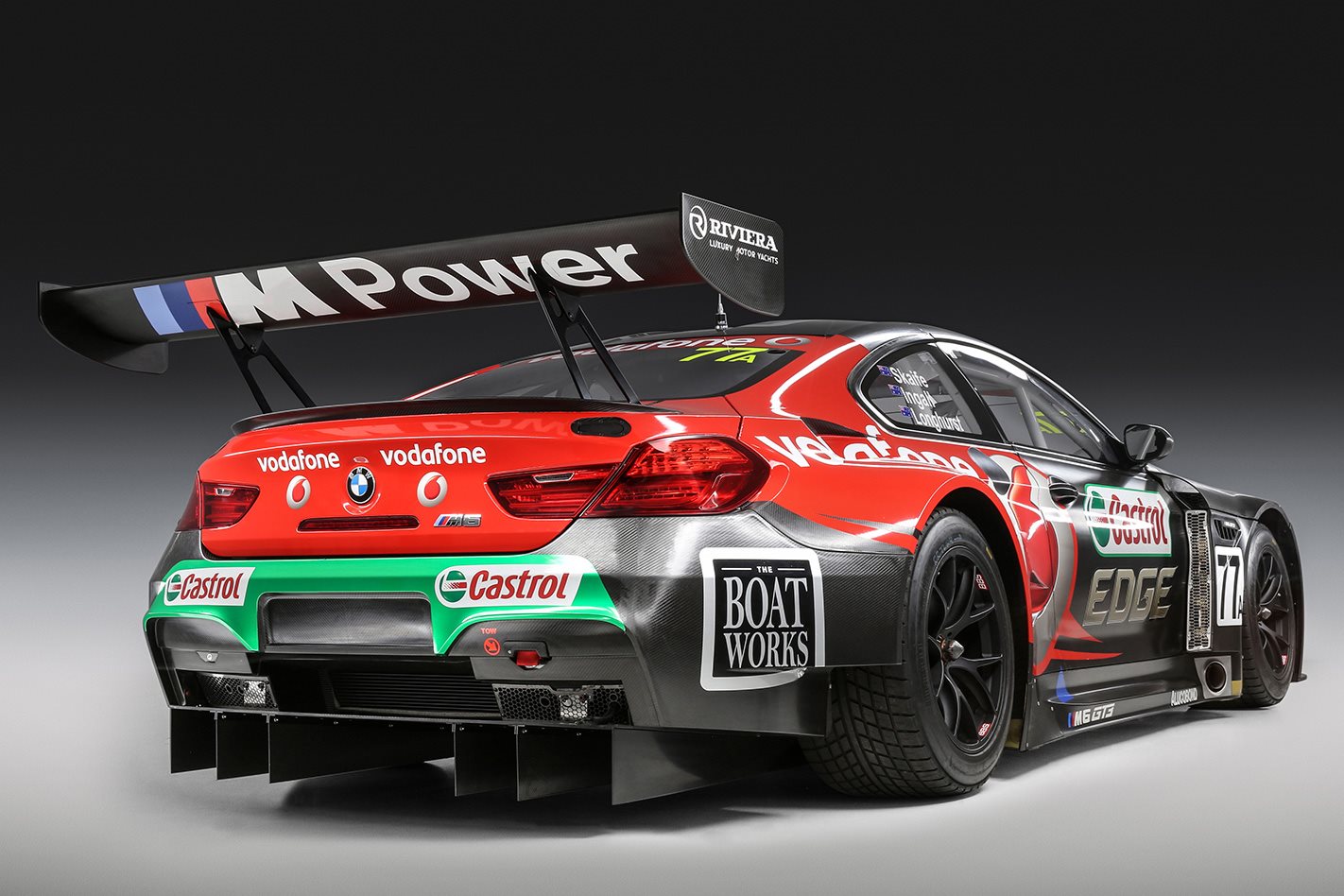The problem with the Z4 GT3, BMW will tell you, was grunt – not enough of it.
While it could keep the competition honest in corners, the little Bimmer struggled to keep up on straights. And when you’re trying to flog brand new racecars to rich gentleman racers, they’re not going to buy a car that doesn’t flatter. Neither is the pro going to want a car that can’t keep up when they’ve got a trophy room to fill.
It was in 2013 these problems started to reach a head as BMW pondered the Z4 GT3’s replacement. It wanted a car with the potency on straights to match mid-corner menace.
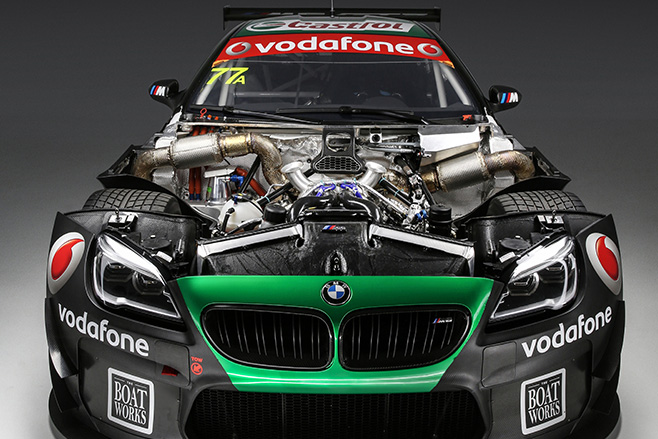
From the outset the obvious replacement from a marketing perspective was the M4 – its relatively compact dimensions and lighter weight making it ideal, on paper, for the GT3 treatment. But still spooked by the ghosts of grunt from the Z4 days, BMW was not confident it could get its 3.0-litre turbocharged straight six up to GT3 speed. And so the M4 idea was shelved.
If only it had a twin-turbo V8 coupe in its road car arsenal, BMW thought. And before it knew it, its motorsport boffins were walking laps around a BMW M6 exchanging dangerous looks. They’d found their car.
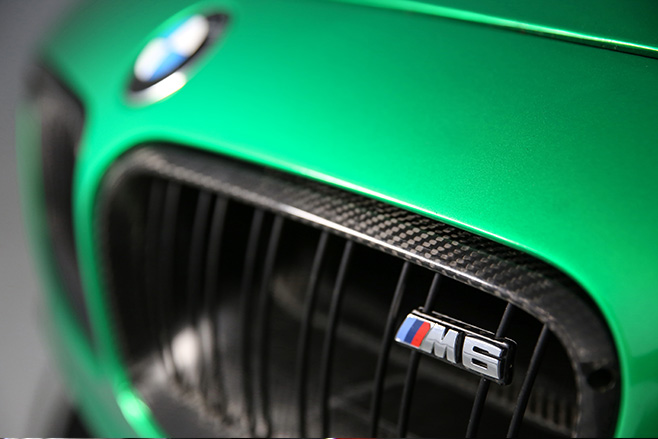
There was a problem, though. The M6 weighed in at 1850kg. If BMW wanted to GT3-ise its storming luxury coupe, it needed a personal trainer, and stat.
Sooner than that, though, another problem presented itself. While the M6’s V8 had no issue keeping its cool on the road, it would get a little flustered in racing trim – not acceptable for a racecar that needed to be belted at full noise for sometimes 24 hours at a time.
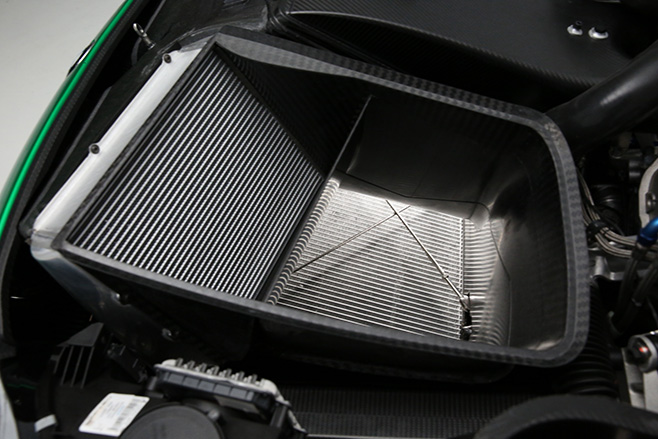
You’ve probably never heard of Gotland but, 40 minutes from Stockholm in the Baltic Sea, and never getting warmer than 20 degrees even in summer, with a racetrack it’s the perfect place to develop a race engine that’s still learning how to keep its cool.
Initially this meant some fairly routine racecar treatment: a dry sump system and some air-to-air intercoolers, while those kidney grilles were put to work feeding air to the turbos and a gaping front bar letting as much air as possible into the radiator.
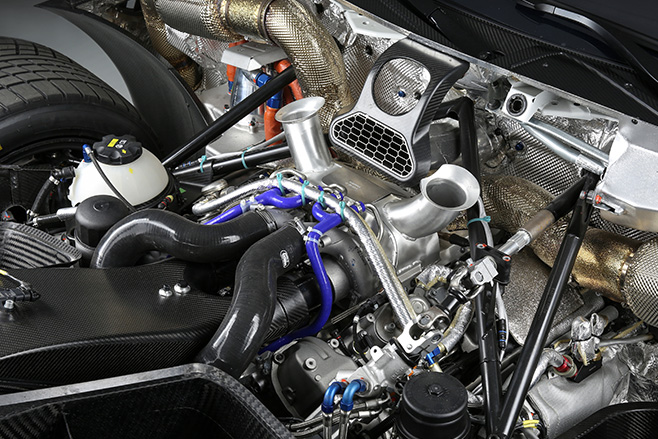
You’d think with all this plumbing, looking into the M6 GT3’s engine bay would be about as exciting as putting your head in the cupboard under the kitchen sink, but you’d be wrong. Unclip the pins and, with two people, gently lift off the surprisingly light and utterly gorgeous one-piece carbonfibre bonnet and you’re treated to a purposeful and menacing engine tucked back in the firewall and not sullied by a single dodgy plastic cover. It’s all business.
But though the cooling requirements of the M6 GT3’s engine have shaped a lot of its exterior, with even more heat to extract the vents don’t stop at the bonnet. Ducts on the rear haunches and front bumper channel cool air to the brakes while the bonnet also sends fresh air to the ECU and driver.
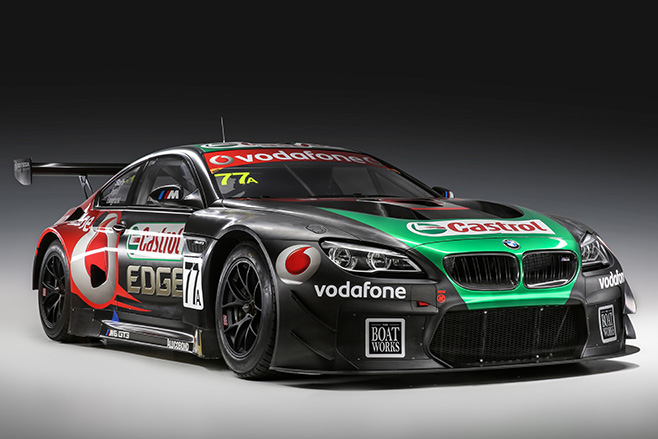
Things are just as interesting under all that gorgeous carbonfibre bodywork, too. Beginning with the air-conditioning – yeah, mate, she’s got AC – but not any AC. With cabin temperatures reaching as high as 60 degrees Celsius, BMW Motorsport recognised the need to keep not only the car cool, but also the fleshy sack hanging on to the steering wheel, and so the AC is bolted to the Ricardo six-speed transaxle mounted in the rear, the condenser sitting fore of the oil cooler just above the rear diffuser.
Having figured out how to keep everyone and everything cool, BMW returned to the initial challenge: getting the weight down. Unfortunately turfing out the rear seats and stereo wasn’t going to cut it.
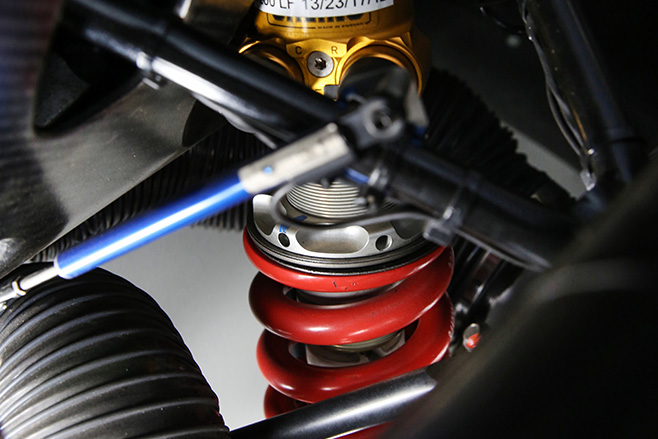
Meanwhile BMW had to get clever, including bolting the entire front structure – engine, radiators, front brakes, front suspension and front bumper – to the chassis as one piece. With no original chassis from the firewall forward, it’s all been replaced with spaceframe, permitting BMW Motorsport to also extend the wheelbase by 50mm to a lengthy 2901mm – all the while tucking the engine as far behind the front axle as possible for optimised weight distribution.
Without suspension towers this means the V-mounted turbos are free to vent their spent gases in as short a journey as possible, maximising response. Hence the exhausts exiting behind the front wheels.
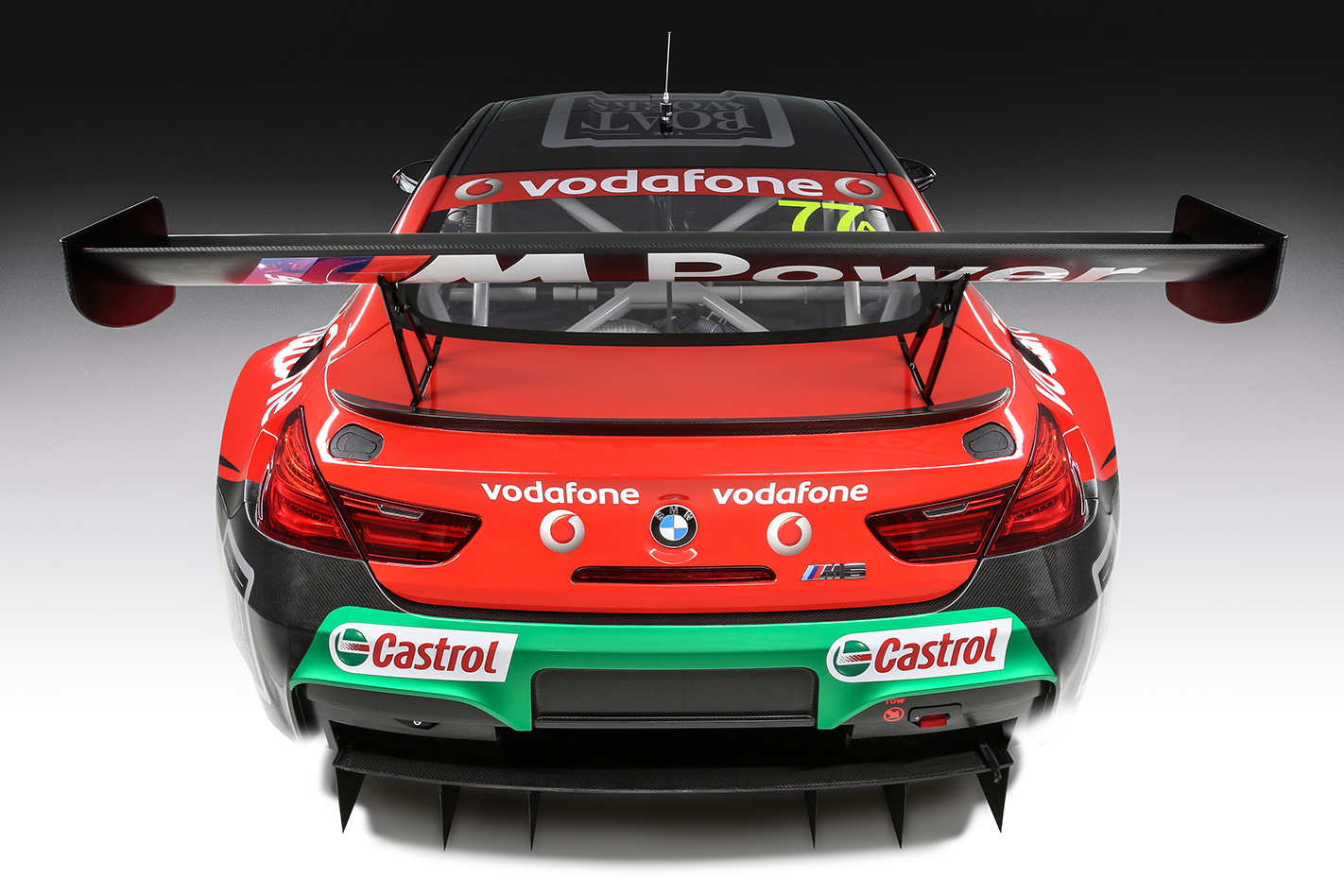
Of course, it’s still Big with a capital B, a brooding 2046mm wide – 34mm more than the Z4 GT3 and 147mm wider than an M6 road car, permitting BMW to fit huge 13-inch-wide BBS wheels (18 inches diameter).
Yet for all that, the M6 GT3 was still not yet ready to race. It was now time for BMW to add the wings. At 1.8 metres wide, the rear wing is plainly enormous and teams up with an aggressive rear diffusor – longer and wider than a pallet – to produce an undisclosed amount of downforce. But across the car – including the fearsomely sculpted front splitter with canards – you can count on it being a lot.
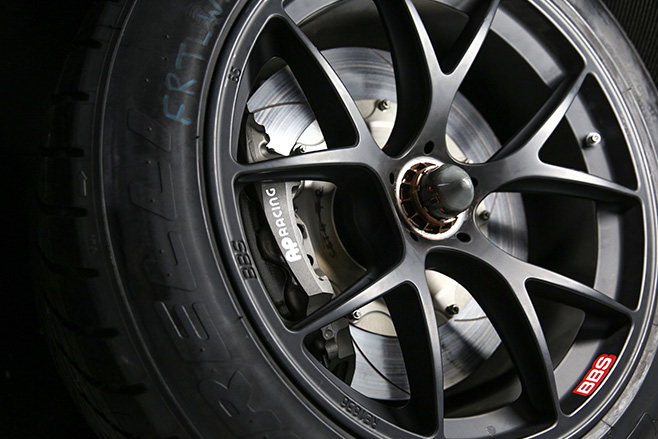
But across the top of the Mountain, the M6 road car and Supercar could only dream of the amount of speed (200km/h) and throttle commitment (flat, often) the M6 GT3 can permit. All thanks to downforce.
As you’d expect the cockpit is very business focused with no frills, including the piece-of-art carbonfibre F1-style steering wheel with paddles easily within a finger’s reach. You sit almost more in the middle of the M6 GT3 than you do the conventional driver’s position, your arse on the deck and visibility very restricted in every direction, looking through roll cage and other things to get to the mirrors, which would be your best friend in a car with such limited rearward visibility.
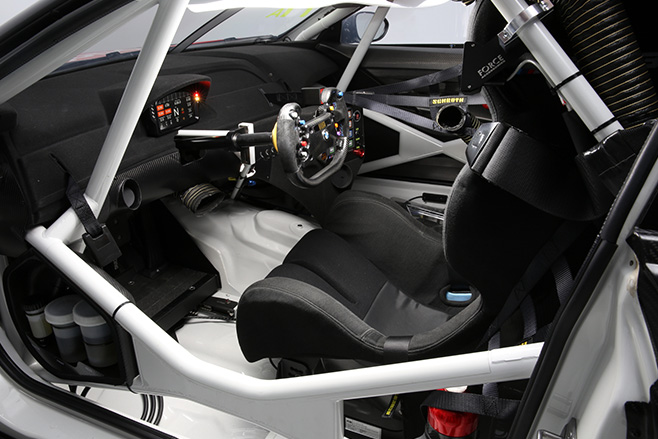
But another must-have GT3 trophy is the Bathurst 12 Hour and unfortunately it wasn’t to be for BMW in 2017. The Bavarian outfit threw unprecedented resources at its 2017 campaign, booking the track for a private test session last November prior to the race and flying to Australia some of its best motorsport engineers – something no other manufacturer has done.
BMW’s driver line-up was formidable, too. Double DTM champion Marco Wittman joined four-time Bathurst 1000 winner Steven Richards and Supercars champion Mark Winterbottom in one car; while former F1 driver Timo Glock bolted into the car on these pages with Australian touring car royalty Mark Skaife, Tony Longhurst and Russell Ingall the other. Unfortunately for BMW, the Richards car suffered a power steering failure while Ingall had a close encounter of the wall kind. Both cars failed to finish.
But the disappointment came with valuable lessons – and engineering data – that will no doubt be useful in the future. And with the Bathurst 12 Hour seemingly in rude health, there’s always 2018.
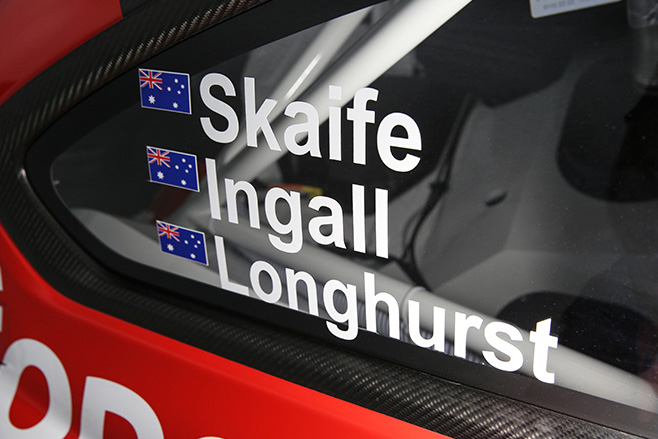
The Big Test
Straight from the factory BMW sees Bathurst as one of the biggest customer racing events in the world. So when we tagged along to its private test day at the circuit we learned from Aussie Adam Baker, BMW Motorsport’s head of race operations, that booking the track and flying in a crack team of engineers was a given.
“We did a similar thing at Daytona [in 2016], it was the first time the car had run anywhere in the world,” he said. “So that’s how it works, structurally, to identify key events where it makes sense to have a bit of factory support. I can perhaps imagine the following year we’ll have less involvement because the teams will have experience.”
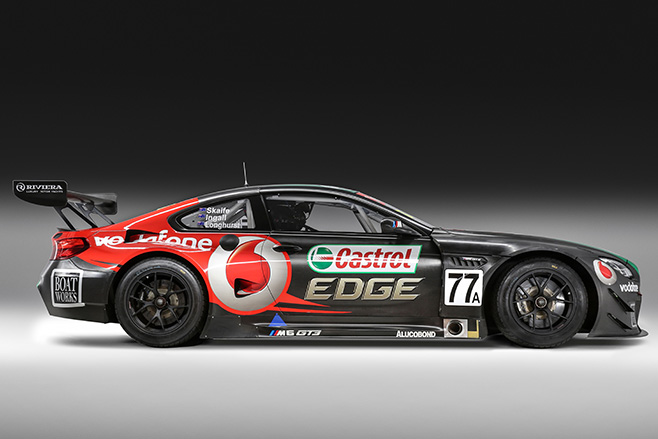
Both BMW’s factory cars found misfortune, though, with the #7 Castrol Vodafone M6 crashing out at the six-hour mark and power steering woes pushing BMW Team SRM’s M6 to 14th at the final hour. Unfortunately Mostert’s pace in the M6 didn’t see the race’s end.


